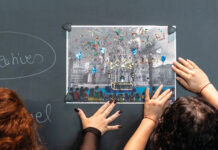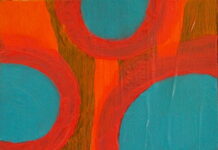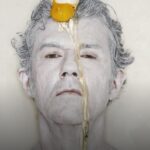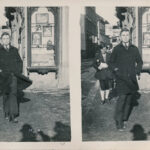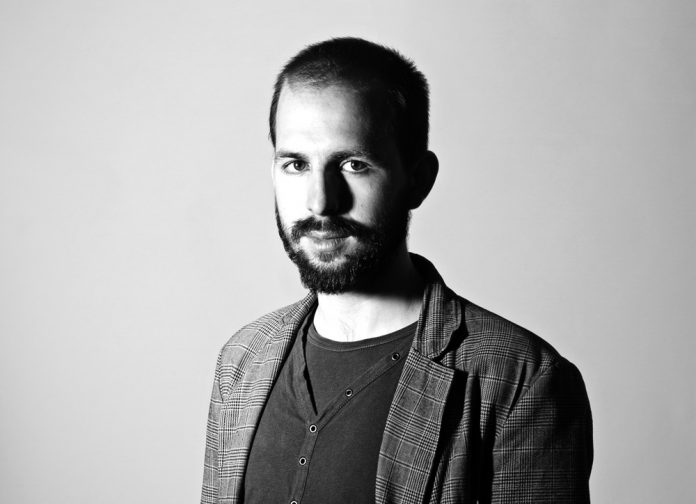
Michaelias – Media art and the human-machine relationship
The audiovisual art of Michaelias uses the new media to draw attention to the “mutilation” of our communication and the loss of the importance of the body in our interaction.
In the Internet age, communication has been disconnected from the body for a long time now. Smartphones, laptops and tablets enable us to communicate with other people regardless of spatial, time and social contexts. While communication between people is increasingly shifting to the virtual space, face-to-face communication is withering away at an ever faster rate. Personal conversations and the personal gestures that go with them are being suppressed in everyday life in favour of the virtual plane: e-mails, video telephony, chats and various social media are replacing direct exchange. We are increasingly losing our relationship to our bodies. Language is no longer traced back to the body that produces it, but is instead reduced to electrical signals. This loss of the body and the reduction of physical communication, as well as the diversion of communication via the media, is the focus of the work of the Viennese film and media artist Michaelias, whose real name is Micha Elias Pichlkastner. His interest in film led Michaelias to study multimedia art in Salzburg, with the aim of starting out on a career in the film industry. During his period of study, he became increasingly interested in the new media. He was attracted to the idea of creating other worlds that burst the 2-dimensional boundaries of film. After finishing college, he moved to Toronto. During his long stay abroad, he worked for the Canadian photographer and director Ryan Enn Hugs, among other things creating music videos for the Canadian indie band The OBGMs.
In Web 2.0, the body is increasingly losing its importance
As well as his media art projects, Michaelias, who now lives in Vienna, continues to work in the visual effects area of film postproduction. He contributed the visual effects and animations for the experimental film project “Los Feliz” by Austrian artist and filmmaker Edgar Honetschläger. Michaelias can also be found at festivals every so often. One fixed date in his diary is the Schmiede Festival in Hallein, where the best minds in media and computer art come together every year to exchange ideas and present their projects. Michaelias first showed his work at the festival in 2011 with the installation “Black Box”, in which he already examined the themes of machines, technology and their impact on communication. At the tenth sound:frame festival at the beginning of 2016, Michaelias was one of the speakers in the departure Creators Lab on the theme of “How to collaborate”.

How virtual communication influences our perception
Michaelias also makes a critical examination of technologies and media in his latest audiovisual installation, “Replica”. Here, he focuses on the loss of information through medial communication and the change in perception this entails. On the basis of his experience during a long-distance relationship, in which for months on end, communication took place solely via Skype, he reflected on the issue of the reduction of human interaction through the interposition of a medium. Exchange between people now only occurs virtually, and the laptop itself becomes a “substitute” for one’s partner. Due to the size of the screen, the body of one’s interlocutor is restricted and downsized in the form in which it appears. This aspect is increasingly the focus of the current shift from physical to virtual interaction, namely the battle for the importance of the body. The body retreats behind the virtual appearance, combined with a loss of orientation and of tactile opportunities for exchange. The reduction of the body through the limitation of the screen is also reflected in the structure of “Replica”. The core piece of this work is a large screen, which is big enough to cover a real-life body and its movement. The body is additionally emphasised and overstated by the reduced two-dimensionality and by a second screen. In 2015, the installation was awarded the Salzburg federal state prize for electronic music in the “Interdisciplinary project” category. “Replica” was also nominated for the 2016 Content Award in the “Sound & Vision” category. The sound was provided by Arno Deutschbauer, whom Michaelias already knew before he started studying, and with whom he has repeatedly worked on new projects. Currently, they are putting together a toolkit designed to enable an audiovisual performance based on their interaction.
Micha Elias Pichlkastner
Künstler und Filmschaffender
Postproduktion,(Motion-)Design& Compositing, Medienkunst
(audiovisuelle Performances und Installationen)
www.michaelias.com



